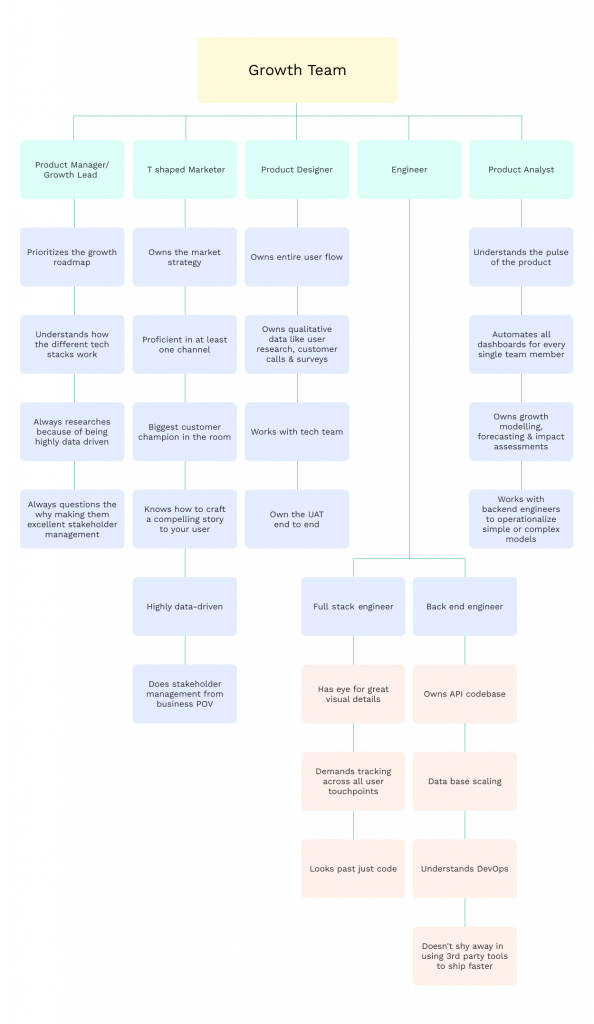Do you think growth hacking is dead? Before you answer, we want you to know a few secrets to business growth by Udayan Walvekar, Co-founder, GrowthX. Read on to demystify growth hacking and then ponder upon the question we asked you!
As you know, the growth of the business is a function of several factors. Here’s what we’ll be catching up on while talking a bit more about growth.
What are Stages of Startup Growth?
There are three stages of a startup:
- Finding product-market fit
This stage has lower retention because it is more about acquiring new customers.
- Early scaling
There is decent retention while the acquisition is doubled in this stage.
- Mature scaling
The startup focuses on becoming a marketing leader to monopolize it further.
Well Known Growth Hacking Examples
Hotmail used one such growth hack. They hyperlinked Hotmail in every email signature. This got them a whopping 12 million users, of which 2.5 million came due to the signature back when there were only 70 million internet users.
Engineers at Airbnb & Craigslist also figured out one such hack too. They found out they can post on craigslist through Airbnb without using any API with a URL.
Why Move Away from Growth Hacking?
Hacks are short-term in nature as they do not have the same effect when repeated. These hacks do not work every time because these hacks are the rarest moonshots. It is not the way businesses can grow. In hindsight, every organization must adopt an organization-wide growth strategy. Growth comes only using a systematic & structured approach to solve for it. It won’t come by using pop-ups or leads.
How to Look at Growth?
One of the biggest myths startups have about growth is, a growth hacker can magically scale their company. But they need to stop looking for a superhero to solve growth. Thus, it’s necessary to know the factors that drive growth in a company. They are shipping a product, finding a product-market fit & growing the product.
Shipping a product depends on understanding a user’s pain point, validating the scale of the problem, finding out its possible solutions & building a minimum viable product.
Finding a product-market fit is a function of the product launch, receiving feedback, relaunching until there is a flat retention curve & referral effect. This flat retention curve can also be obtained when there’s a strong word of mouth while the referral effect comes into play when there’s a willingness to pay.
Growing the product is dependent on growing revenue. This growing revenue depends on the number of paying customers & lifetime value per user. The number of paying customers is a function of total users & percentage of users turning into paid customers.
The growth framework by Udayan will help you understand the other factors that the above 3 factors depend on. It’ll help you find all the connecting dots to know the points of focus in your business. Click here to check the framework!
How to Build a Growth Team?
A growth team normally consists of, growth lead or product manager, a t-shaped marketer, a full-stack engineer, a designer, and a product analyst. This changes as per the kind of industry because the definition of growth for every industry is different. For example, a delivery service app focuses on operations while a cab service focuses on demand-supply management.
Growth lead in the team prioritizes the growth roadmap, understands how the different tech stacks work, always researches because of being highly data-driven & always questioning the why making them excellent stakeholder management.
T shaped marketer owns the market strategy with proficiency in at least one channel. Being the biggest customer champion in the room knows how to craft a compelling story for your user, highly data-driven, bonus if they can query data on their own, and does stakeholder management from a business point of view.
The product designer owns the entire user flow. 70% designer & 30% visual designer own qualitative data like user research, customer calls, surveys, always question the why & work with tech team & own the UAT end to end.
Full-stack engineers only exist in pockets. The front-end engineer has an eye for great visual detail, demands tracking across all user touchpoints, and looks past just code. Back-end engineer owns API codebase, database scaling, understands DevOps & isn’t shy in using 3rd party tools to ship faster.
Product analyst understands the pulse of the product, automates all dashboards for every single team member, owns growth modeling, forecasting & impact assessments. This individual works with backend engineers to operationalize stuff irrespective of the model type, simple or complex.
Here’s the simplified view of how your growth team should look like.

What Would be Your Advice to Every Budding Entrepreneur?
Here are thoughts by Udayan Walvekar for all startups:
- Think about midterm & long-term goals.
- Prioritize the thing that’ll give 80% of your result.
- Creativity thrives in growth.
Check out this video to know more about growth.
To see more such events, subscribe to PayU India’s Youtube Channel & stay updated with every event.






